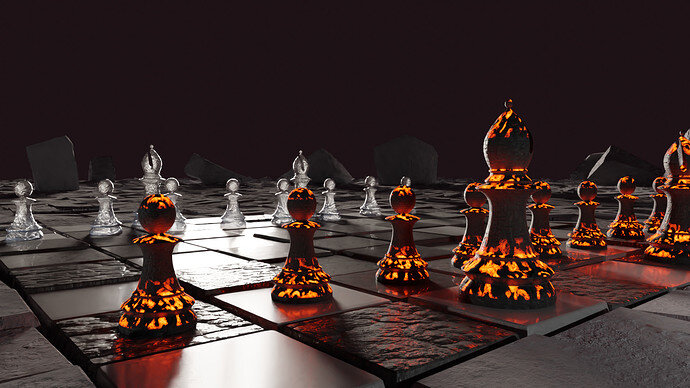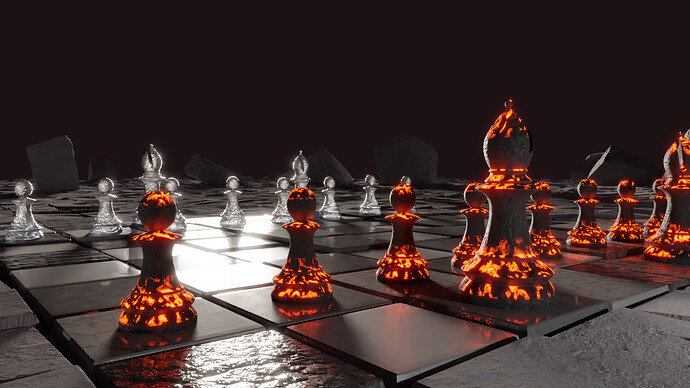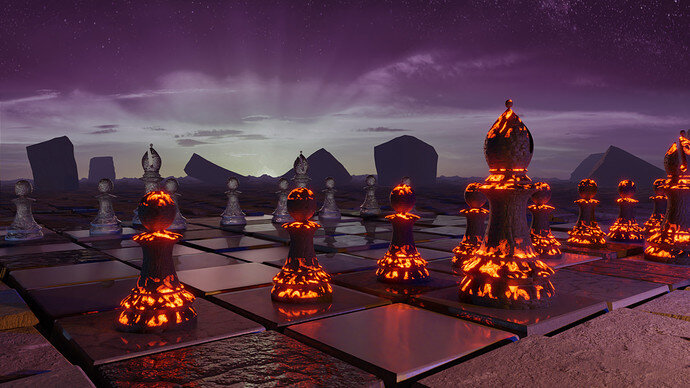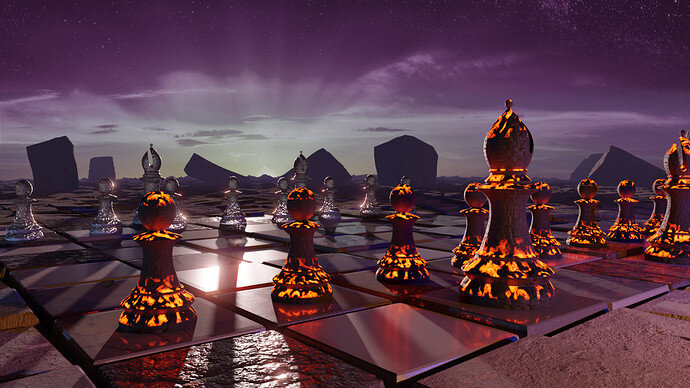It’s slowly coming together. Not yet exactly what I imagined, but getting closer. No sophisticated effect in this first view, but the lighting and the surroundings are what I want. The Ice and Fire Chess Set is a monumental set: pawns are 6" tall.
The floor was built like in the course, then inset and raised to make tiles. Tiles were then separated in the same object using split, after selecting the bottom edges. They are non-manifold: just surfaces. Random motion is quite easy to achieve using the random selection tool and linked selection tool, followed by small rotation. Repeat from several angles turning around the board, and you’re done. Some tiles are slightly raised or depressed, including in the black and white game board part of the floor. For the larger expanse in the back, which was created using the array modifier, a wave modifier is used to shake the floor tiles. They are actually bent, but it’s too far to be visible.
Base textures are from BlenderKit, but colours have been harmonized in a very unsaturated tone. Randomly chosen board tiles are cracked. The cracked textures are similar to the smooth ones, with a cracked concrete normal map used to add the cracks. Around the board, the texture for surrounding stones is procedural.
Finally the camera is set to wide field of view, and there is a very light depth of field effect, otherwise the large distant rocks look unrealistically sharp. There is only one mesh for the rocks, which is rotated and slightly scaled to make different looking rocks, as seen from the camera. I discovered that, when linking a bishop with Alt-D, the notch is not duplicated. The boolean operation no longer works because it is done using the original notch object. If both are selected (requires that both are visible), then it’s fine. The notch shape is not visible in the render because it is a wireframe object.
Updated image:
-
Rotated board into correct orientation
-
Bloom effect achieved using compositing






